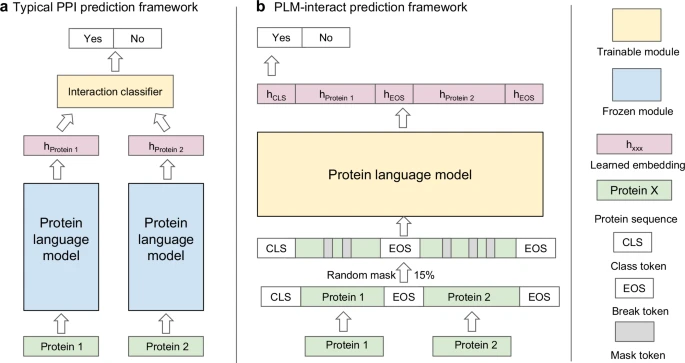Prepopulated Search Bars Are Quietly Boosting Online Shopping Behavior in a Big Way

A new research study has taken a close, data-driven look at something most of us barely notice when we shop online—the search bar—and found that this tiny piece of the interface can meaningfully shape what people buy. The work comes from researcher Chenshuo Sun of the Business School at Renmin University of China, and it appears in the journal Marketing Science. What makes this study especially interesting is that it delivers causal evidence, based on a large-scale field experiment, showing how simply prepopulating a search bar with a keyword can influence consumer behavior across an entire shopping session.
The idea is simple: instead of an empty search box, the e-commerce app shows a word or phrase before the user starts typing. But depending on what that word is, the downstream effects on browsing, purchasing, and spending can change dramatically. The study tested this in the real world on a major Asian e-commerce platform, using a randomized experiment with 72,587 consumers.
These users saw one of four versions of the search bar when they opened the platform’s mobile app:
- A bar prefilled with a trending keyword (a popular product category based on platform-wide search trends)
- A bar prefilled with a personalized keyword (a category tied to each user’s recent browsing history)
- A bar prefilled with a niche keyword (a less popular category not linked to the user)
- Or a normal, empty search bar (the control group)
From there, the researchers traced what people searched, clicked, viewed, and bought. The results turned out to be surprisingly strong for such a minimal design tweak.
How Trending Keywords Influence Shoppers
When the app displayed a trending category keyword, users showed more interest in exploring broad, popular categories. The study found that this treatment increased purchase incidence by 10.4% and raised overall spending by 8.8% compared to the control group.
What’s striking is that this bump didn’t come at the cost of other actions. People didn’t reduce use of the homepage menu or recommendation widgets. They also didn’t stop typing their own searches. In other words, the trending prompt added value—it guided users toward discovery without displacing their natural browsing behavior.
This effect makes sense when you consider how real customers behave. Many users landing on an app don’t have a precise goal yet. A trending keyword acts like a gentle nudge toward what other shoppers are currently exploring. Because the suggestion is relevant and broadly appealing, it broadens the consumer’s sense of available options.
How Personalized Keywords Change Behavior
The personalized prompt produced the largest effects. When the search bar contained a keyword tied to each user’s recent browsing patterns, purchase incidence rose by 21% and spending increased by 17% compared to the empty-bar control.
Personalized terms work differently from trending ones. They don’t encourage broad exploration—instead, they focus user attention on what they were already somewhat inclined to buy. People became more willing to revisit previously viewed categories, which boosted conversions.
There was one interesting behavioral shift: users in the personalized-keyword condition performed fewer self-initiated searches. They typed their own queries less often, likely because the prefilled prompt already matched something they had in mind. However, this didn’t harm overall engagement; in fact, it deepened it within those familiar categories.
This distinction highlights two different psychological mechanisms:
- Trending keywords widen the funnel of exploration.
- Personalized keywords deepen engagement within familiar interest areas.
Both approaches increase purchasing, but for opposite behavioral reasons.
Why Niche Keywords Don’t Work
The third treatment involved a niche keyword—something not tied to the user’s history and not a trending category. This version had little to no measurable effect on purchasing or spending.
This outcome reinforces an intuitive but important design rule for recommendation systems: irrelevantly targeted prompts don’t help. If the suggested keyword doesn’t align with user interest or broader platform trends, shoppers simply ignore it and behave as usual.
No Cannibalization of Other Navigation Tools
One of the concerns platforms often have when adding new prompts or guidance tools is cannibalization. For example, if the search bar becomes too active or too influential, users might stop exploring menus, categories, or recommended content—possibly hurting overall discovery.
But the study found no evidence of cannibalization. Users treated the prefilled keyword as an additional pathway rather than a replacement for other tools. This is good news for UX designers: it suggests that search bar prepopulation is a low-risk, additive feature that enriches the user journey.
Why This Study Matters for E-commerce
Search bars see a huge share of user interaction. Prior research shows that a majority of online shopping journeys begin with the search box, and more than half of page views or revenue on many platforms stem from search activity. Because of that, even tiny changes at the entry point can cascade through the entire experience.
This study provides rare field-experimental evidence from a real platform with tens of thousands of users. Most UI research is conducted in labs or simulations, but this experiment tested actual purchasing behavior under real conditions. That alone makes the findings more actionable for product teams, marketers, and UX designers.
Practical Insights for Shopping Platforms
Here are some takeaways that online retailers can apply immediately:
- Use trending keywords when the goal is to broaden category exploration.
- Use personalized keywords to drive conversion for users with recent browsing activity.
- Avoid irrelevant keywords, which neither help sales nor improve engagement.
- Don’t worry about cannibalization—prepopulated bars complement other navigation systems.
- Treat the search bar as a recommendation surface, not just an input field.
These strategies can be implemented cheaply but yield meaningful impact. They align with broader trends in personalization, predictive interfaces, and context-aware UI design.
Why Tiny Interface Changes Have Big Psychological Effects
This study fits into a growing body of research showing that small, friction-reducing cues can influence online decisions more than users realize. A prepopulated keyword acts as:
- A mental shortcut, reducing effort
- A suggestion cue, shaping expectations before typing
- A priming mechanism, subtly directing attention
- A starting point, altering how users explore product spaces
Because humans tend to follow the path of least resistance, giving them a relevant starting point naturally guides the shopping process.
Looking Beyond the Study: Search Behavior in E-commerce
To add context, here are some broader insights from the field:
- Search remains the dominant discovery tool despite the rise of recommendation feeds, AI suggestions, and graphical menus.
- Autocomplete, suggested searches, and voice search are all variants of this same idea—reducing typing effort and offering structured cues.
- Platforms increasingly merge search with recommendation systems, using browsing history, trending data, and machine learning to shape results.
- Even off-platform tools like Google Shopping use prepopulated or suggested query patterns to guide shoppers.
This new research refines our understanding by isolating how a single keyword placed inside the search bar affects real purchases.
The Bigger Message
The key takeaway is that the search bar is not a passive field; it’s an active strategic element of the shopping interface. A simple cue—just one keyword—can influence whether users explore more broadly or dig deeper into familiar territory, and ultimately how much they spend.
For consumers, this may be surprising because the influence is subtle. For platforms, it highlights the importance of thoughtful interface design grounded in real behavioral data rather than assumptions.
Research Paper
How Does Prepopulating Search Bars with Keywords Affect Online Consumer Behavior? A Field Experiment





